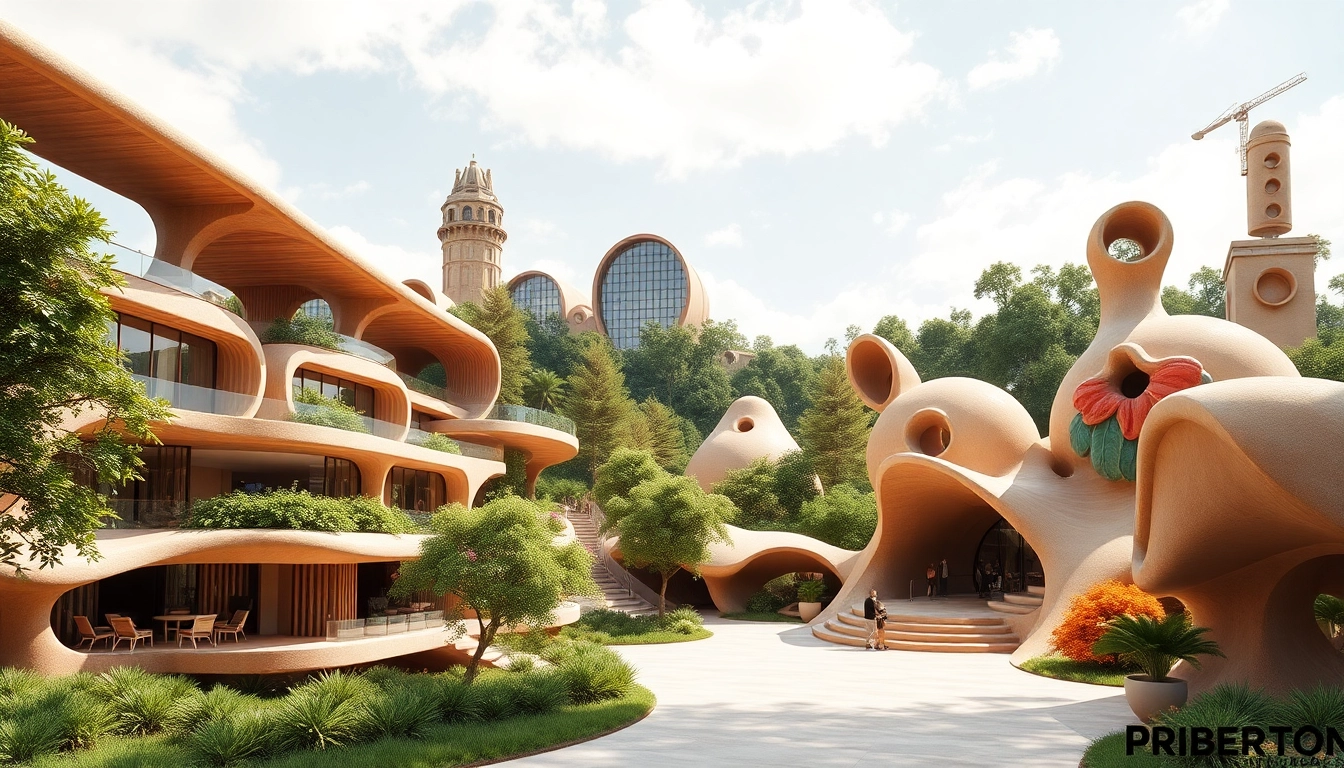
Understanding 3D Model Visualizations
What are 3D Model Visualizations?
3D Model Visualizations encompass a range of techniques and processes aimed at creating, displaying, and interacting with three-dimensional images or digital representations of objects. These visualizations utilize computer-generated graphics to present data and designs in a more dynamic and engaging manner, enabling viewers to gain a deeper understanding of the subject matter. The essence of 3D visualization lies in its ability to convert abstract concepts into tangible visuals, making them essential tools in various fields such as architecture, product design, medical imaging, and entertainment.
Importance of 3D Model Visualizations in Design
The significance of 3D model visualizations in design cannot be understated. They serve not only as a means of representation but also as powerful communication tools. By allowing designers, architects, and engineers to visualize their ideas in three dimensions, they can explore spatial relationships and design aesthetics more effectively. This visual clarity aids in identifying potential issues early in the design process, thereby saving time and resources. Moreover, 3D visualizations enhance collaboration among team members, stakeholders, and clients, as they provide a common frame of reference.
Common Applications in Various Industries
The applications of 3D model visualizations span across numerous industries:
- Architecture and Construction: Architects use 3D visualizations to present building designs, helping clients to visualize the final product before construction begins.
- Product Design: Designers leverage 3D modeling tools to create product prototypes, enabling them to assess aesthetic details and functional aspects before manufacturing.
- Medical Imaging: In healthcare, 3D visualizations play a crucial role in medical imaging techniques, providing detailed insights into human anatomy for better diagnosis and surgical planning.
- Entertainment: The film and video game industries utilize advanced 3D visualization techniques for character modeling, animation, and special effects, creating immersive experiences for audiences.
- Education: 3D models are increasingly used in educational settings, enhancing the learning experience by providing interactive and visual aids that help students grasp complex subjects.
Best Tools for Creating 3D Model Visualizations
Top Software Solutions for 3D Visualizations
Selecting the right software is essential for creating high-quality 3D model visualizations. Here are some of the most popular and effective tools available:
- Autodesk 3ds Max: Renowned for its powerful modeling and rendering capabilities, 3ds Max is widely used in various industries for creating realistic 3D visuals.
- Blender: An open-source software that boasts an impressive array of features for modeling, rendering, and animation. It is widely popular among independent creators and studios alike.
- SketchUp: This user-friendly software makes 3D modeling accessible to beginners. Its intuitive interface and vast library of pre-made models streamline the design process.
- Cinema 4D: Favored for motion graphics and visual effects, Cinema 4D provides powerful tools for creating stunning 3D visualizations for commercial use.
- Adobe Dimension: This software is particularly useful for product visualization, allowing users to create photorealistic 3D designs and branding elements with ease.
Free Tools for Beginners to Start with 3D Modeling
For individuals just starting out in 3D modeling, there are several free tools that offer great learning opportunities:
- Tinkercad: An online 3D design and modeling tool aimed at beginners. Its simple interface allows users to create basic models without the steep learning curve of more complex software.
- FreeCAD: A free and open-source parametric 3D CAD modeler that is ideal for users who want to create real-life objects of any size.
- SketchUp Free: The free version of SketchUp, which allows users to create and share 3D models online using a web-based interface.
- Meshmixer: A powerful tool for working with 3D meshes, ideal for beginners looking to manipulate and combine existing models.
Comparative Analysis of Visualization Tools
Choosing between different 3D modeling software can be daunting. Here’s a comparative analysis based on key aspects:
- Ease of Use: Tinkercad and SketchUp are considered the most user-friendly platforms for beginners, while Autodesk 3ds Max and Cinema 4D may require more time to master.
- Features: Advanced users may benefit from the extensive features of Blender and 3ds Max, which offer tools for professional-grade animation, rendering, and simulations.
- Cost: While several software options require a purchase, Blender and FreeCAD provide robust capabilities at no cost, making them attractive to students and hobbyists.
- Community and Support: Popular platforms like SketchUp and Blender have extensive online communities, offering forums, tutorials, and resources that facilitate learning and troubleshooting.
Techniques for Effective 3D Model Visualizations
Best Practices in 3D Visualization Design
To achieve compelling 3D visualizations, adhering to best practices is essential:
- Define the Objective: Clearly articulating the purpose of the visualization will guide design decisions and help in selecting the most appropriate elements.
- Simplicity is Key: Avoid overcomplicating models. Clarity often trumps complexity, especially when showcasing designs to clients or stakeholders.
- Focus on Details: Attention to detail, such as texture and lighting, can greatly enhance the realism of a model and its overall aesthetic appeal.
- Iterative Design: Regularly gather feedback from peers and stakeholders to make iterative improvements, ensuring the final product meets expectations and requirements.
Incorporating Textures and Lighting
Textures and lighting are vital components of 3D visualization that can significantly affect the overall quality of the output. Texturing involves applying images to 3D models to impart realism, while sophisticated lighting techniques enhance the atmosphere and mood of the scene.
Key techniques include:
- Use of High-Quality Textures: Opt for high-resolution textures that are as realistic as possible to give models a lifelike quality.
- Dynamic Lighting: Use multiple light sources to create depth and dimension in the model. Understanding the properties of light and shadow can greatly enhance the storytelling aspect of the visualization.
- Environment Integration: Incorporate environmental elements, such as background and reflections, to make the visualization feel interconnected and realistic.
Animation Techniques for Enhanced Presentations
Incorporating animation can elevate the effectiveness of your 3D visualizations by allowing motion and interaction. Here are several animation techniques:
- Camera Movements: Introducing dynamic camera movements can lead the viewer through the model, highlighting key features as they unfold.
- Object Animation: Animated elements, such as opening doors or moving parts, can make scenarios more realistic and engaging.
- Transitions: Seamless transitions between scenes or sections can enhance storytelling, providing fluidity and maintaining audience interest.
Challenges in 3D Model Visualization
Overcoming Common Pitfalls in 3D Design
Despite the advantages, the road to creating effective 3D visualizations is not without challenges. Here are some common pitfalls and strategies to overcome them:
- Complex Models: Overly complex models can lead to lengthy render times. Streamlining designs and focusing on essential details can enhance performance and visual clarity.
- Technical Issues: Software might occasionally crash or produce unexpected results. Regularly saving progress and familiarizing oneself with the software’s troubleshooting resources can mitigate these issues.
- Poor Feedback Loops: Ognoticing the need for iterative feedback can lead to designs that do not meet expectations. Foster open communication with clients and team members throughout the design process for continual refinement.
Managing Workflow and Collaboration
Effective collaboration in 3D visualization projects can present its own set of challenges. Managing workflow and ensuring collaboration can be addressed through several strategies:
- Version Control: Implement systems for tracking changes in models to prevent confusion among team members and ensure everyone is working on the latest version.
- Utilizing Collaboration Tools: Leverage software that supports collaborative workflows, allowing multiple users to work simultaneously and providing real-time feedback on designs.
- Setting Clear Roles: Define the roles and responsibilities of each team member early in the project to streamline processes and prevent overlaps in tasks.
Adapting to the Latest Technology Trends
The realm of 3D visualization is constantly evolving, driven by rapid technological advancements. Staying informed about new developments is crucial for professionals in the field:
- Virtual and Augmented Reality: These technologies are making waves in the 3D visualization space. Exploring their potential for immersive presentations can set your work apart.
- Artificial Intelligence: AI is reshaping the rendering process, allowing for faster and more efficient workflows. Embracing AI tools can help optimize creative processes.
- Cloud-Based Solutions: Cloud technologies simplify storage and collaboration, allowing teams to work from different locations and maintain accessibility to files across devices.
Future of 3D Model Visualizations
Emerging Technologies and Their Impact
As we look to the future, several emerging technologies promise to reshape the landscape of 3D model visualizations. These include:
- Real-Time Rendering: Technologies that provide real-time rendering capabilities are dramatically altering project workflows, enabling live feedback and iterative design processes.
- 5G Technology: The roll-out of 5G networks is set to facilitate faster data transmission and enhance connectivity, making it easier to share and experience high-quality 3D content across devices.
- Advanced Rendering Algorithms: New rendering techniques that apply artificial intelligence are optimizing workflows, reducing render times while improving visual fidelity.
Innovative Uses in Marketing and Advertising
The marketing and advertising sectors are beginning to harness the power of 3D visualizations more than ever before. Innovative applications include:
- Interactive Product Demos: 3D model visualizations allow consumers to interact with products virtually, providing a richer understanding of features and benefits before purchase.
- Augmented Reality Experiences: Brands are using AR to bridge the gap between digital shopping and physical products, allowing customers to visualize products within their space.
- Immersive Storytelling: 3D visualizations can create compelling narratives that engage audiences in ways traditional media cannot, effectively conveying brand messages and enhancing emotional connections.
Predicting Trends in 3D Model Visualizations
As the influence of 3D model visualizations continues to expand, several key trends are emerging that professionals should keep an eye on:
- Increased Customization: The demand for personalized experiences will drive innovations in customization capabilities within 3D modeling software.
- Integration with Other Technologies: As sectors continue to innovate, expect growing integrations with IoT devices, enabling data-driven visualizations hinged on real-time analytics.
- Focus on Sustainability: 3D visualization will play a role in innovations aimed at sustainability, with designers utilizing 3D modeling to optimize energy-efficient constructs and reduce waste.







